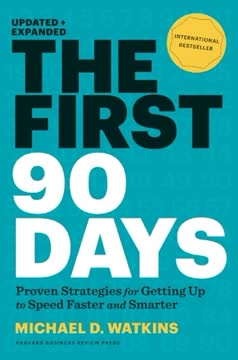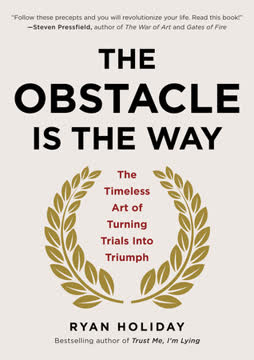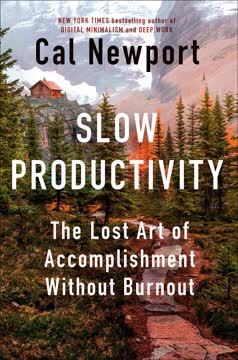Key Takeaways
1. SEO is an Essential, Ongoing Investment for Visibility and Growth
Whether your business involves representing $25 million legal cases or selling $7 ebooks doesn’t matter. Website traffic can change everything about your business.
SEO is vital. Search Engine Optimization is the continuous practice of improving your website's appearance and position in organic search results. It's not a one-time fix but an ongoing effort necessary to remain competitive in the digital age. Done correctly, SEO can generate traffic equivalent to thousands or millions of dollars in paid advertising.
Targeted reach. Unlike traditional advertising, SEO allows you to target potential clients precisely when they are searching for your products or services. This targeted visibility ensures you connect with leads who are actively seeking what you offer. Investing in SEO builds a lasting asset that compounds value over time, much like a retirement fund.
Competitive advantage. SEO is a relatively young field, meaning many competitors may not be leveraging it effectively yet. Becoming savvy in SEO now can provide a significant advantage, setting your business up for years of growth. The cost varies by market competitiveness, but the return on investment can be exponential.
2. Google's Algorithm Prioritizes Relevancy, Popularity, and Integrity
With SEO, just like maintaining your lawn, you will focus on the inputs you can control to achieve your desired output of more traffic and more leads.
The SEO trifecta. Google's complex algorithm evaluates hundreds of factors, but they boil down to three core components: Relevancy, Popularity, and Integrity. Relevancy ensures your content matches user search intent, Popularity measures your site's authority through links, and Integrity confirms your site is technically sound and trustworthy. Top-ranking websites excel in all three areas.
User experience focus. Google's primary goal is to provide users with the best possible experience and the most relevant results. The algorithm rewards sites that load quickly, are secure, mobile-friendly, and offer high-quality, helpful content. By focusing on these factors, you align your site with Google's objectives.
White hat approach. Sustainable SEO relies on "white hat" strategies that adhere to search engine guidelines, building real value over time. Avoid "black hat" tactics that try to game the system with shortcuts, as they risk penalties and removal from search results. Building a lasting foundation is key.
3. Content is the Foundation of Your SEO Strategy
I’ve always said, “Content is the food that Google eats.”
Fueling the algorithm. High-quality, relevant content is essential because Google exists to organize and present information. Regularly publishing fresh content signals to Google that your site is active and authoritative, encouraging more frequent crawling and indexing. This helps your pages rank higher, especially for current topics.
Targeting your audience. Your content strategy should be built around your target audience, addressing their questions and problems. Use keyword research and tools like "People Also Ask" to identify topics your potential clients are searching for. Create comprehensive pillar pages and supporting cluster content to become the most authoritative resource on your subject.
Geographic relevance. For local businesses, creating unique, high-quality content for each specific geographic area you serve is crucial. This helps you rank in localized searches, even if you don't have a physical office in every location. Avoid duplicating content across these pages, as Google penalizes this practice.
4. Links are the Currency of the Web and Build Popularity
In Google’s vast web, links are the strands that spiders follow from page to page.
Building authority. Links pointing to your website from other reputable sites, known as backlinks, are a primary signal of popularity and authority to Google. The quality and relevance of the linking domain matter significantly; a link from a respected industry source is far more valuable than one from an unrelated blog. Focus on gaining links from diverse, authoritative referring domains.
Proactive link building. While some links occur naturally, actively pursuing high-quality backlinks is necessary to compete effectively. Strategies include getting listed in niche directories, securing press coverage, guest blogging on relevant sites, obtaining links from educational or government sites, and engaging in community involvement. Analyze competitors' backlink profiles to identify opportunities.
Anchor text matters. The words used in the link (anchor text) provide context to Google about the linked page's content. Using descriptive, keyword-rich anchor text helps Google understand the relevance of your page. Be vigilant against negative SEO attacks involving spammy or toxic backlinks and use Google's disavow tool to protect your site's reputation.
5. Technical SEO Ensures Your Site is Crawlable and User-Friendly
Technical SEO, or a website’s integrity, is the third component Google considers when ranking web pages within their index.
Site health is critical. Technical SEO involves optimizing the backend of your website to ensure Google's crawlers can easily access, understand, and index your content. Issues like slow page speed, broken links, crawl errors, and mobile-friendliness can significantly hinder your rankings. A technically sound site provides a better user experience, which Google rewards.
Common technical issues. Key areas to monitor include ensuring only one version of your website is indexed (canonical URLs), fixing crawl errors reported in Google Search Console, optimizing page speed on both desktop and mobile, and ensuring your site is fully responsive for all devices. Use tools like Screaming Frog and PageSpeed Insights for audits.
Structured data and duplication. Implementing structured data (schema markup) helps Google understand specific content types, potentially leading to rich results in search. Avoid content cannibalization, where multiple pages target the same keywords, and prevent duplicate content issues by ensuring all pages are unique. Proactive monitoring and fixing technical problems are essential.
6. Local SEO (Google Maps) is Crucial for Brick-and-Mortar Businesses
If you’re a local business with a brick-and-mortar location or you work from home and serve within a selective radius, this chapter is for you.
Visibility in local search. For businesses serving a specific geographic area, appearing prominently on Google Maps is vital. Potential customers often search for local services, and the map pack is the first thing they see. Claiming and optimizing your Google Business Profile listing is the essential first step.
Optimize your listing. Fill out your Google Business Profile completely, including description, photos, hours, and contact information. Crucially, ensure your Name, Address, and Phone number (NAP) are consistent across your website and all online directories. Add local schema markup to your site to reinforce this information for Google.
Reviews and engagement. Customer reviews are a significant local ranking factor. Encourage clients to leave reviews and respond to all feedback, positive or negative, promptly and professionally. Google values businesses that actively engage with customers. Consider hiring a Google Trusted Photographer for a virtual tour to boost trust signals.
7. Visual Content (Photos & Videos) Boosts Engagement and SEO Signals
A picture is worth a thousand words, and a video might be worth a million.
Google sees. Google's AI can analyze images and videos to understand their content and associate relevant keywords with your website. Strategically choosing and optimizing images with descriptive file names, alt text, and captions helps Google better understand your pages. Use tools like Google Cloud Vision to see how Google interprets your visuals.
Enhancing user experience. High-quality photos and videos make your website more engaging and visually appealing, improving the user experience. Videos, in particular, can keep visitors on your page longer, signaling to Google that your content is relevant and valuable. This reduces "pogo-sticking" and boosts rankings.
Driving traffic and trust. Optimized images can appear in Google Image Search, driving direct traffic to your site. Using original photos of your business and team, rather than generic stock images, builds authenticity and trust with both users and Google. While production can be an investment, visual content pays dividends in engagement, rankings, and conversions.
8. Building the Right Digital Marketing Team is Key to Execution
SEO requires a multifaceted skill set—writing, publicity, design, coding, and more.
Team effort. Effective SEO requires diverse expertise, making it difficult for one person to handle everything. Building a dedicated team, whether in-house or by hiring an agency, is crucial for comprehensive strategy execution. A minimum viable team might include a writer and a technical expert, but a full team covers all necessary roles.
Agency vs. In-House. For most small to medium-sized businesses, hiring a reputable agency is often more cost-effective than building a full in-house team. Agencies provide access to specialists in various areas like copywriting, technical SEO, PR, link building, and data analysis for a single fee. Be wary of cheap agencies, as they may lack resources or resort to risky tactics.
Accountability and oversight. Regardless of whether you hire internally or externally, you must understand what your team is doing and hold them accountable. Review reports, provide feedback, and ensure their efforts align with your business goals and Google's guidelines. Your engagement is key to their success.
9. Effective PR & Marketing Efforts Generate Valuable Backlinks
The truth is that the best products don’t always win. It’s the best marketers who get the attention your business needs.
Becoming remarkable. To gain attention and valuable backlinks, your business needs to be "remarkable"—something people want to talk about. This involves believing in your business's unique value, differentiating yourself from competitors, and actively doing interesting things that generate buzz. Share your unique story and personality.
Strategic outreach. Managing PR involves crafting compelling stories, identifying relevant journalists and bloggers, and pitching your story effectively. Quantity and persistence are necessary, as rejection is common. Tailor your pitch to each outlet and highlight why your story is relevant to their audience.
Leveraging press. Once you secure media coverage, leverage it fully. Share the article on social media, use it as social proof to land more interviews, and display it proudly. Crucially, ensure the media outlet includes a backlink to your website, as this is where the primary SEO value lies. Press releases distributed via newswire services can also generate automatic backlinks.
10. Use Data and Tools to Measure Success and Optimize
Without insights and data, there’s no way to know if your strategy is working, so you absolutely must track where you started, where your performance is now, and where you plan to go with your digital marketing goals to grow revenue and sign more cases.
Informed decisions. Relying on data is essential for understanding your website's performance and the effectiveness of your SEO strategy. Tools provide insights into site health, keyword rankings, traffic sources, user behavior, and competitor strategies, allowing you to make informed decisions rather than guessing.
Essential tools. Google offers powerful free tools like Search Console (for technical issues and communication with Google), Analytics (for traffic and user behavior), and PageSpeed Insights (for site speed). Paid tools like Ahrefs and Semrush are invaluable for in-depth keyword research, backlink analysis, and competitor monitoring.
Continuous improvement. Regularly analyzing data from these tools helps you identify what's working, uncover problems, and find new opportunities for optimization. Track key metrics, set baselines
[ERROR: Incomplete response]
Last updated:
Review Summary
Honest SEO receives mostly positive reviews, with readers praising its accessibility and practical advice for SEO beginners and professionals alike. Many appreciate the author's clear explanations of complex concepts and actionable strategies. Some reviewers found the book repetitive or felt it discouraged small businesses from implementing SEO independently. Overall, readers value the book as a comprehensive guide to understanding and improving search engine rankings, with several noting its potential to positively impact their businesses or careers.
Similar Books










Download PDF
Download EPUB
.epub digital book format is ideal for reading ebooks on phones, tablets, and e-readers.




